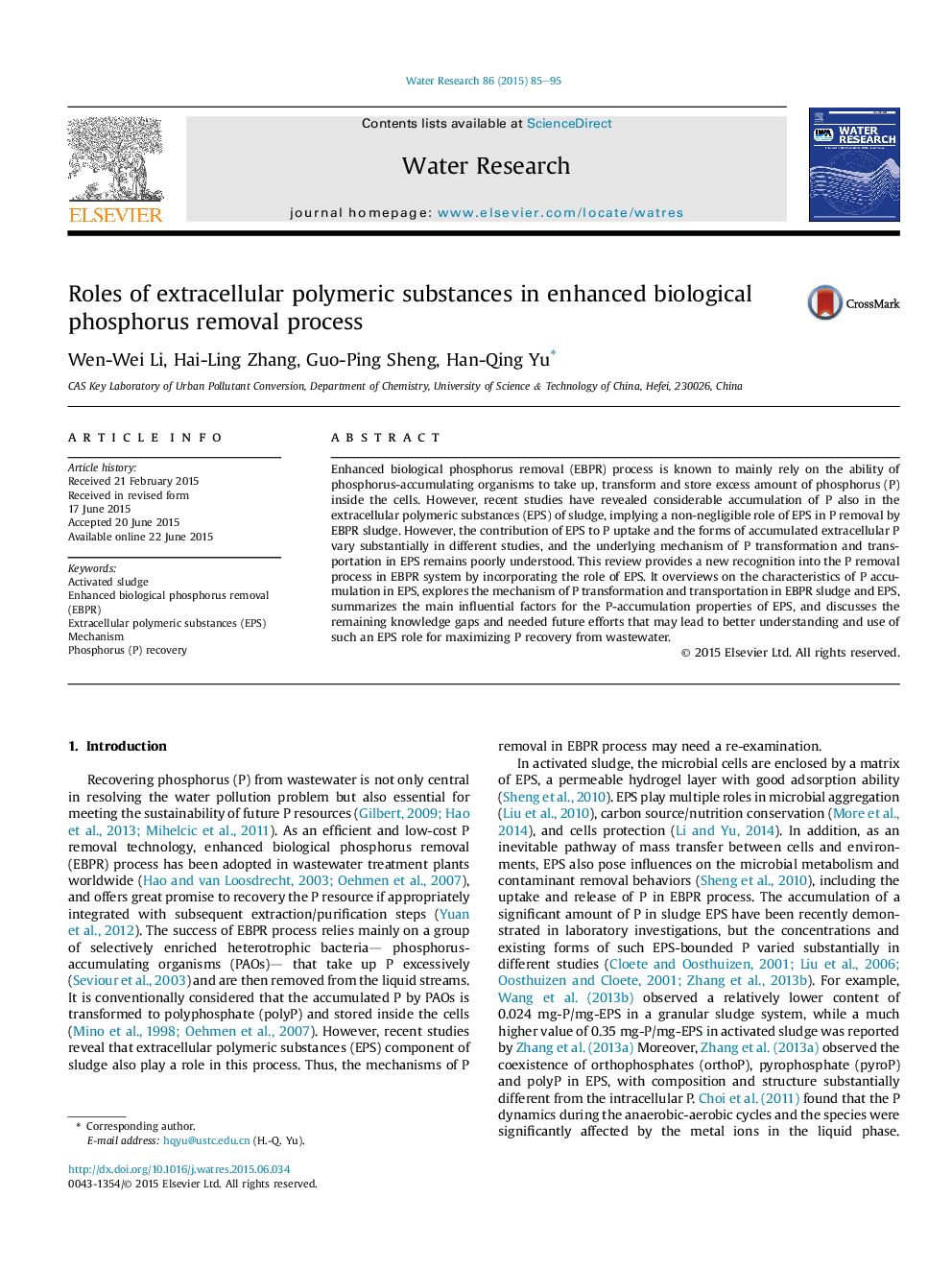| Article ID | Journal | Published Year | Pages | File Type |
|---|---|---|---|---|
| 6365642 | Water Research | 2015 | 11 Pages |
â¢An updated overview on the characteristics of P accumulation in EPS is provided.â¢Mechanisms of P transformation and transportation in sludge and EPS are explored.â¢Main influential factors on the P-accumulation properties of EPS are analyzed.â¢Remaining knowledge gaps and needed future efforts are highlighted.
Enhanced biological phosphorus removal (EBPR) process is known to mainly rely on the ability of phosphorus-accumulating organisms to take up, transform and store excess amount of phosphorus (P) inside the cells. However, recent studies have revealed considerable accumulation of P also in the extracellular polymeric substances (EPS) of sludge, implying a non-negligible role of EPS in P removal by EBPR sludge. However, the contribution of EPS to P uptake and the forms of accumulated extracellular P vary substantially in different studies, and the underlying mechanism of P transformation and transportation in EPS remains poorly understood. This review provides a new recognition into the P removal process in EBPR system by incorporating the role of EPS. It overviews on the characteristics of P accumulation in EPS, explores the mechanism of P transformation and transportation in EBPR sludge and EPS, summarizes the main influential factors for the P-accumulation properties of EPS, and discusses the remaining knowledge gaps and needed future efforts that may lead to better understanding and use of such an EPS role for maximizing P recovery from wastewater.
Graphical abstractDownload high-res image (274KB)Download full-size image
